Mad Hedge Biotech and Healthcare Letter
November 8, 2022
Fiat Lux
Featured Trade:
(A GROWTH STOCK POISED TO BREAK RECORDS)
(LLY), (JNJ), (NVDA), (MA), (PG), (NVO), (ABBV)

Mad Hedge Biotech and Healthcare Letter
November 8, 2022
Fiat Lux
Featured Trade:
(A GROWTH STOCK POISED TO BREAK RECORDS)
(LLY), (JNJ), (NVDA), (MA), (PG), (NVO), (ABBV)

The stock market has been down in the past couple of months, and the outlook still does not look all that good, considering that the issues with inflation and economic crises are showing no signs of ending anytime soon.
However, as Berkshire Hathaway Vice Chairman Charlie Munger noted, long-term investors should not be too anxious over “when” the markets will recover.
Instead, he advised “to think about ‘what’ will happen versus ‘when’” as a far more efficient way to behave in these challenging times.
Bearing that advice in mind, a particular biotechnology and healthcare stock stands out and is worth considering given its promising future: Eli Lilly (LLY).
Eli Lilly has grown at a fast pace and is considered among the most prominent pharmaceutical businesses in the world, ranking second behind Johnson & Johnson (JNJ).
At the moment, its market capitalization is at about $340 billion, making Eli Lilly more valuable than juggernaut Nvidia (NVDA) and other big names like Mastercard (MA) and Procter & Gamble (PG).
The most promising drug in Eli Lilly’s pipeline right now is Mounjaro, earlier known as tirzepatide, which recently received the green light from the Food and Drug Administration.
This once-a-week injection is an approved therapy that targets Type 2 diabetes. On top of that, Mounjaro can also be used as a potential weight loss drug.
While there are already existing diabetes drugs that double as weight loss treatments, mainly from Novo Nordisk (NVO), what makes Mounjaro distinct is the fact that it’s the first-ever unimolecular dual GIP/GLP-1 receptor agonist. In layman’s terms, this treatment could function in the same way as two completely different hormones that serve to control blood sugar levels.
Now, the question is: How significant an impact is Mounjaro on Eli Lilly?
Based on data from the National Institute of Diabetes and Digestive and Kidney Diseases, about 2 in every 5 adults are classified as obese, while 1 in 11 adults suffer from severe obesity.
That’s a substantial market. More than that, the consequences of obesity are said to have ripple effects throughout the entire healthcare industry.
In fact, the Centers for Disease Control and Prevention estimate the yearly medical costs in the United States due to obesity to be roughly $173 billion in 2019.
Following its approval, Mounjaro raked in $16 million in sales. Given its unique mechanism and the massive market it can target, Mounjaro is estimated to rake in $25 billion in peak revenue annually.
Moreover, this treatment could not only be a game changer for the company but also the entire healthcare community.
For context, Eli Lilly’s total revenue in 2021 from all its products combined was $28 billion. Needless to say, Mounjaro would put the company on track for some serious growth.
Looking at this weight loss and diabetes drug's trajectory and potential, Mounjaro can benefit Eli Lilly in the same way AbbVie (ABBV) maximized Humira. For years, Humira was hailed as the top-selling drug in the world.
While it’s set to lose its patent protection by 2023, there’s no doubt that this anti-inflammatory drug boosted the share price and bottom line of AbbVie.
Clearly, this is a business poised to become even more valuable soon. This means its current share price could be considered a bargain in the next few years.
How long it would take for Eli Lilly to make money off its pipeline remains a question mark. However, concentrating on “what” is most likely about to happen instead of “when” makes it easy to make a case for Eli Lilly being an excellent growth investment.
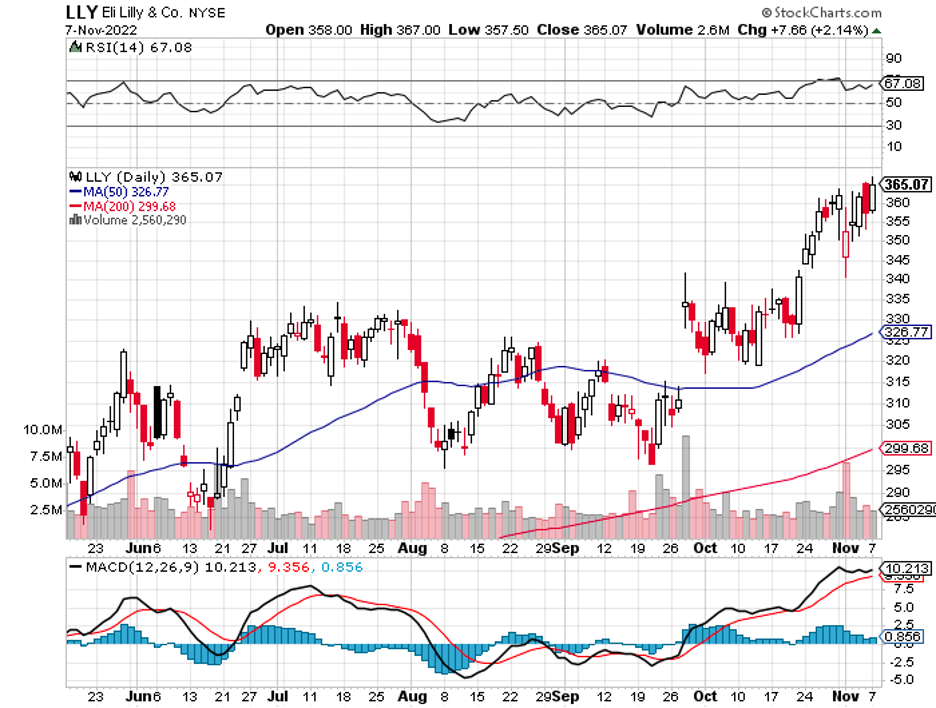
Mad Hedge Biotech and Healthcare Letter
August 24, 2022
Fiat Lux
Featured Trade:
(A NEW KID ON THE BLOCK)
(GSK), (HLN), (UL), (PG), (JNJ), (PRGO), (PBH)

GlaxoSmithKline (GSK) started 2022 by turning down a $60 billion offer from Unilever (UL) for its consumer healthcare division, describing the price as too low.
By June, this same division became a standalone company named Haleon (HLN), with a market value of $29 billion—less than half the amount Unilever wanted to pay.
This means investors looking to buy shares of this spinoff still have a chance to take advantage of the bargain price.
Haleon is so far valued at roughly 13.5 times the consensus average for 2023 earnings, making it a lower multiple compared to competitors selling consumer healthcare items like Unilever, which roughly trades at 17 times its projected 2023 profits, and Procter & Gamble (PG), which trades at about 24 times its estimated earnings.
Compared to Procter and Gamble and Unilever, though, Haleon is a large-cap company that’s considered a pure-play consumer healthcare company.
It started trading as a standalone company by July, with a portfolio that included oral health items such as Aquafresh and Sensodyne, some OTC drugs like Advil and Theraflu, and several supplements including the best-selling multivitamin brand Centrum.
Keep in mind that the majority of Haleon’s core products have been practically unchanged for years. This spinoff only allotted roughly $300 million for R&D in 2021.
That comprises a mere 2.7% of its turnover. Meanwhile, GSK spent over 20% of its turnover on R&D initiatives within the same period excluding Haleon.
So far, the only notable pure-play consumer healthcare competitors are Perrigo (PRGO) and Prestige Consumer Healthcare (PBH). However, these two operate at a far smaller scale, with market capitalizations of less than $6 billion.
The absence of a competitive peer group and the limited track record of Haleon as a solo company makes this GSK spinoff more speculative compared to other consumer healthcare firms.
Haleon’s future would become clearer by the end of 2022, with more earnings reports under its belt, alongside the completed deal with Johnson & Johnson (JNJ).
JNJ also plans to create a standalone company for its consumer healthcare division in 2023. Haleon will be combined with this particular spinoff to form a new category.
Based on its current portfolio, brand recognition, and years of experience under Big Pharma’s, Haleon is projected to grow by 3.3% annually from 2023 through 2026.
At this point, Haleon is already considered a dominant player in the field. In the 2021 earnings report, this division brought $11.5 billion to GSK. That’s lower than JNJ’s own consumer healthcare division, which raked in $14.6 billion, but higher than Procter & Gamble’s $10 billion.
A standalone consumer healthcare company has the capacity to attract additional investor attention and gain higher valuations for those looking for steady—albeit not jaw-dropping—growth while earning consistent income from dividends.
Haleon announced that it intends to start paying out in the first half of 2023 “at the lower end” of the 30% to 50% range of its earnings. Looking at the company’s recent price, its 2023 dividend yield is estimated to be at 2.3%.
The consumer healthcare sector is a lucrative segment. The size of this market is estimated to reach $301.4 billion by 2027, with a 7.2% growth in CAGR throughout that period.
The demand for products in this segment tends to be unaffected by economic issues like recessions. Moreover, established brands, particularly those under Big Pharma names like JNJ and GSK, can easily set a very high barrier for competitors to overcome.
Overall, Haleon presents an opportunity for investors to bag a bargain.
It has a solid lineup of strong brands, which have shown their capacity to drum up consistent sales and demand low R&D expenses. These factors make Haleon a potential cash cow that could steadily deliver rising dividends for years to come.
Haleon is a good bet on an excellent emerging market—not to mention a virtually recession-proof—market.
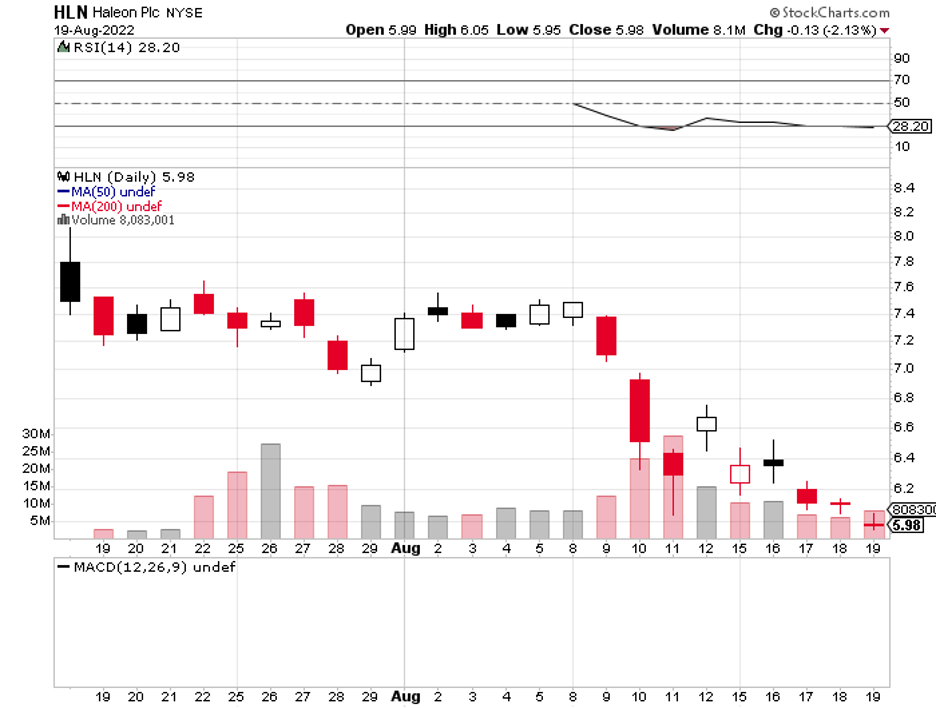
Global Market Comments
April 2, 2021
Fiat Lux
Featured Trade:
(WHY CONSUMER STAPLES ARE PEAKING),
(XLP), (PG), (PEP), (PM), (WMT), (AMZN),
(WHY YOUR OTHER INVESTMENT NEWSLETTER IS SO DANGEROUS)

Everyone always needs toilet paper, right?
Wrong. At least stock investors don’t.
Once considered one the safest stock market sectors in which to hide out during bear markets and more recently pandemics, Consumer Staples no longer offer the hideout they once did.
Who needs a hideout anyway now that the Roaring Twenties are on and may make another decade to run.
Take a look at the Consumer Staples Select Sector SPDR ETF (XLP). It’s top five holdings include Proctor & Gamble (PG) (11.13%), Coca-Cola (KO) (10.07%), PepsiCo, Inc. (PEP) (8.7%), Philip Morris (7.80%) (PM), and Walmart (WMT).
Its only remaining attraction is that it has a 30-day SEC yield of 2.67%.
The (XLP) has recently been one of the best performing ETFs. However, costs are rising dramatically, and the bloom is coming off the rose.
In short, the industry is caught in a vice.
In the meantime, ferocious online competition from the likes of Amazon (AMZN) makes it impossible for consumer staples to pass costs on to consumers as they did in past economic cycles.
In fact, the prices for many consumer staples are falling thanks to the world’s most efficient distribution network. And if you are an Amazon Prime member, they will deliver it to your door for free. I just bought a pair of Head Kore 93 skis in Vermont, and they were delivered in two days.
It gets worse. The largest sector of the consumer staples market, the poor and working middle class are seeing the smallest wage gains, the worst layoffs, and the slowest pandemic recovery. Almost all pay increases are now taking place at the top of the wage ladder.
AI specialists and online marketing experts, yes, Safeway checkout clerks and fast food workers, no.
This also will get a lot worse as some 50% of all jobs will disappear over the next 20 years, mostly at the low end.
Blame technology. There is even a robot now that can assemble Ikea furniture. And there goes my side gig!
So, if your friend at the country club locker room tells you it’s time to load up on Consumer Staples because they are cheap, safe, and high-yielding, ignore him, delete his phone number from your contact list, and unfriend him on Facebook.
If anything, the sector is a great “sell short on rallies” candidate.
As I never tire of telling followers, never confuse “gone down a lot” with “cheap.”
Eventually, the sector will fall enough to where it offers value. But that point is not now. There has to be a bottom somewhere.
After all, everyone needs toilet paper, right? Or will a robot soon take over that function as well? They already have in Japan.
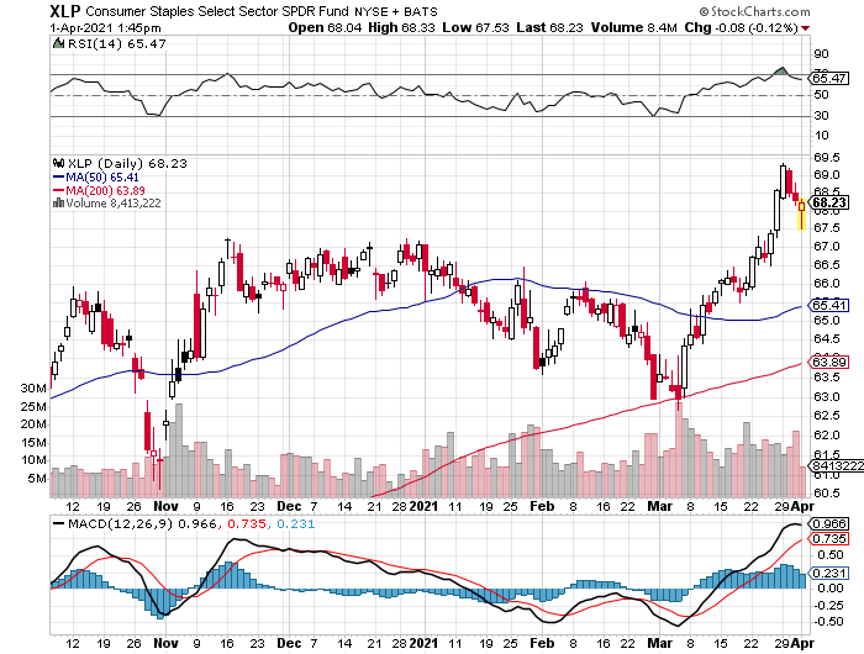
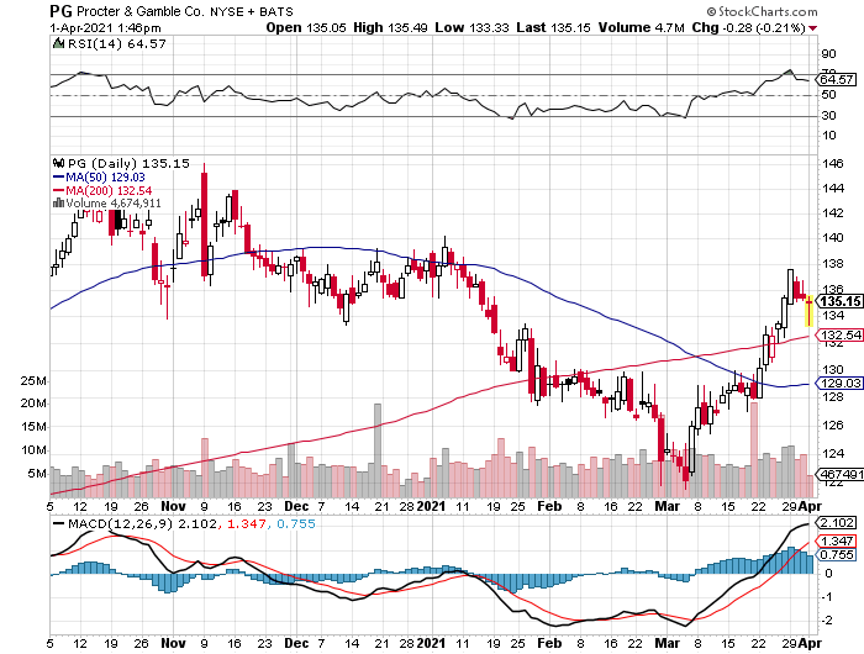
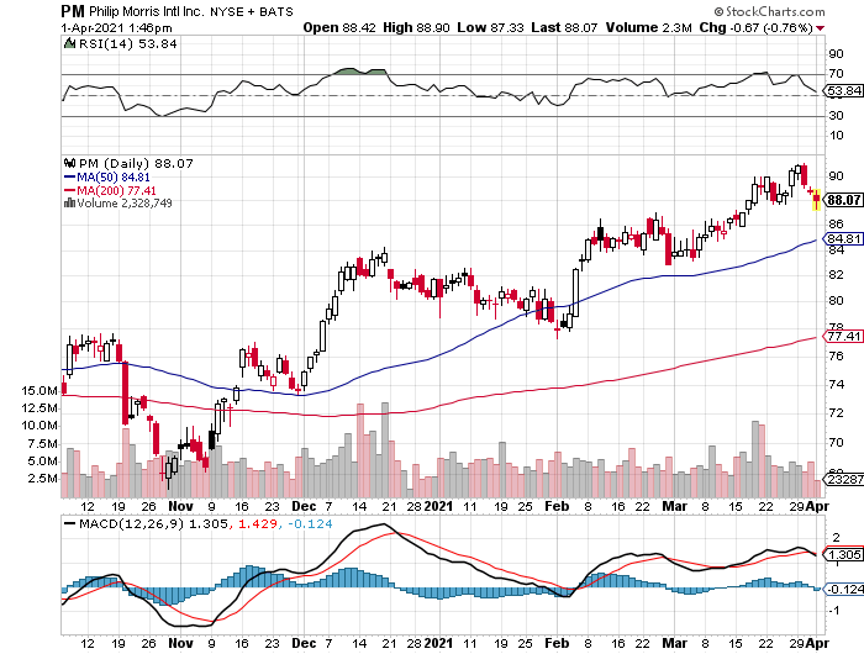
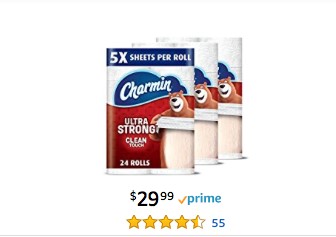
Global Market Comments
May 15, 2020
Fiat Lux
Featured Trade:
(WHY CONSUMER STAPLES ARE DYING),
(XLP), (PG), (PEP), (PM), (WMT), (AMZN),
(WHY YOUR OTHER INVESTMENT NEWSLETTER IS SO DANGEROUS)

Mad Hedge Technology Letter
September 16, 2019
Fiat Lux
Featured Trade:
(GILLETTE’S MARKETING FLUB)
(PG)

The pitfalls of getting it wrong can bring you tears.
Proctor and Gamble (PG) got a taste of precisely that.
We underestimate the power of digital marketing and how it can make or break a company’s fortune.
Even many small businesses rely on media platforms such as YouTube, Patreon, Snapchat, Twitter and so on to disseminate their message and nurture their brands.
But what if it goes badly wrong?
The story of personal grooming brand Gillette is a stark warning for companies to stay in their lanes and not reach too far when it comes to their digital marketing campaigns.
Once companies start diving into delicate social issues, they risk alienating half or more of their targeted audience.
In January, Gillette debuted a short film in part of continuing their woke campaign with a self-titled phrase called “toxic masculinity.”
To see the short video please, click here.
Gillette’s underlying message suggested that men in general pose a deep problem in society.
Their self-coined phrase “toxic masculinity” rolls through clips of portraying a young boy being bullied by other boys, sexual harassment, catcalling, and a man speaking over a woman in a meeting highlighting the disappointment in the male gender.
Instantly, the backlash from Gillette’s core demographic, men who shave, were heard from in full force with many shouting from the rooftops for a boycott on Gillette’s and even Procter and Gamble’s products.
Gillette didn’t blink and doubled down on their woke campaign rolling out a “fat acceptance” ad.
They did not stop there and tripled down distributing an ad depicting a father's first time teaching his female-to-male transgender child how to shave.
Gillette were defiant in their beliefs and felt an obligation to dip into social discourse and take a stand for what they think is the right message to sell razors.
Just a mere seven months after Gillette’s social justice campaign began, Gillette's parent company Procter & Gamble took an eye-popping $8 billion write-down citing a painful charge for Gillette’s personal grooming division.
The company would have produced net profits without this ghastly charge.
Granted that Gillette was already having a tough time selling more razors as a combination of trends and demographics decrease the volume of male shaving, but the exacerbation of underperformance was purely due to the revolt against the digital marketing campaign which drove away their core customer.
Gillette’s excuse was currency fluctuations and increasing competition but that can in no way explain the giant uptick in customer deterioration.
Management’s strategy of profiting from woke capitalism on the back of the #MeToo movement blew up in their face and many men chose to respond with their wallets.
This also represents the viral nature of digital marketing in 2019 and it really works both ways.
It also indicates how powerful these tech platforms are as the cradle of human discourse and underscores how reliant even the largest of corporations are on digital marketing through the likes of Instagram, Facebook, Google, Amazon and the who’s who of Silicon Valley.

Global Market Comments
June 5, 2019
Fiat Lux
Featured Trade:
(WEDNESDAY, JUNE 26 BRISBANE, AUSTRALIA STRATEGY LUNCHEON)
(WHY CONSUMER STAPLES ARE DYING),
(XLP), (PG), (KO), (PEP), (PM), (WMT), (AMZN),
(WHY YOUR OTHER INVESTMENT NEWSLETTER IS SO DANGEROUS)

Legal Disclaimer
There is a very high degree of risk involved in trading. Past results are not indicative of future returns. MadHedgeFundTrader.com and all individuals affiliated with this site assume no responsibilities for your trading and investment results. The indicators, strategies, columns, articles and all other features are for educational purposes only and should not be construed as investment advice. Information for futures trading observations are obtained from sources believed to be reliable, but we do not warrant its completeness or accuracy, or warrant any results from the use of the information. Your use of the trading observations is entirely at your own risk and it is your sole responsibility to evaluate the accuracy, completeness and usefulness of the information. You must assess the risk of any trade with your broker and make your own independent decisions regarding any securities mentioned herein. Affiliates of MadHedgeFundTrader.com may have a position or effect transactions in the securities described herein (or options thereon) and/or otherwise employ trading strategies that may be consistent or inconsistent with the provided strategies.
This site uses cookies. By continuing to browse the site, you are agreeing to our use of cookies.
OKLearn moreWe may request cookies to be set on your device. We use cookies to let us know when you visit our websites, how you interact with us, to enrich your user experience, and to customize your relationship with our website.
Click on the different category headings to find out more. You can also change some of your preferences. Note that blocking some types of cookies may impact your experience on our websites and the services we are able to offer.
These cookies are strictly necessary to provide you with services available through our website and to use some of its features.
Because these cookies are strictly necessary to deliver the website, refuseing them will have impact how our site functions. You always can block or delete cookies by changing your browser settings and force blocking all cookies on this website. But this will always prompt you to accept/refuse cookies when revisiting our site.
We fully respect if you want to refuse cookies but to avoid asking you again and again kindly allow us to store a cookie for that. You are free to opt out any time or opt in for other cookies to get a better experience. If you refuse cookies we will remove all set cookies in our domain.
We provide you with a list of stored cookies on your computer in our domain so you can check what we stored. Due to security reasons we are not able to show or modify cookies from other domains. You can check these in your browser security settings.
These cookies collect information that is used either in aggregate form to help us understand how our website is being used or how effective our marketing campaigns are, or to help us customize our website and application for you in order to enhance your experience.
If you do not want that we track your visist to our site you can disable tracking in your browser here:
We also use different external services like Google Webfonts, Google Maps, and external Video providers. Since these providers may collect personal data like your IP address we allow you to block them here. Please be aware that this might heavily reduce the functionality and appearance of our site. Changes will take effect once you reload the page.
Google Webfont Settings:
Google Map Settings:
Vimeo and Youtube video embeds:
